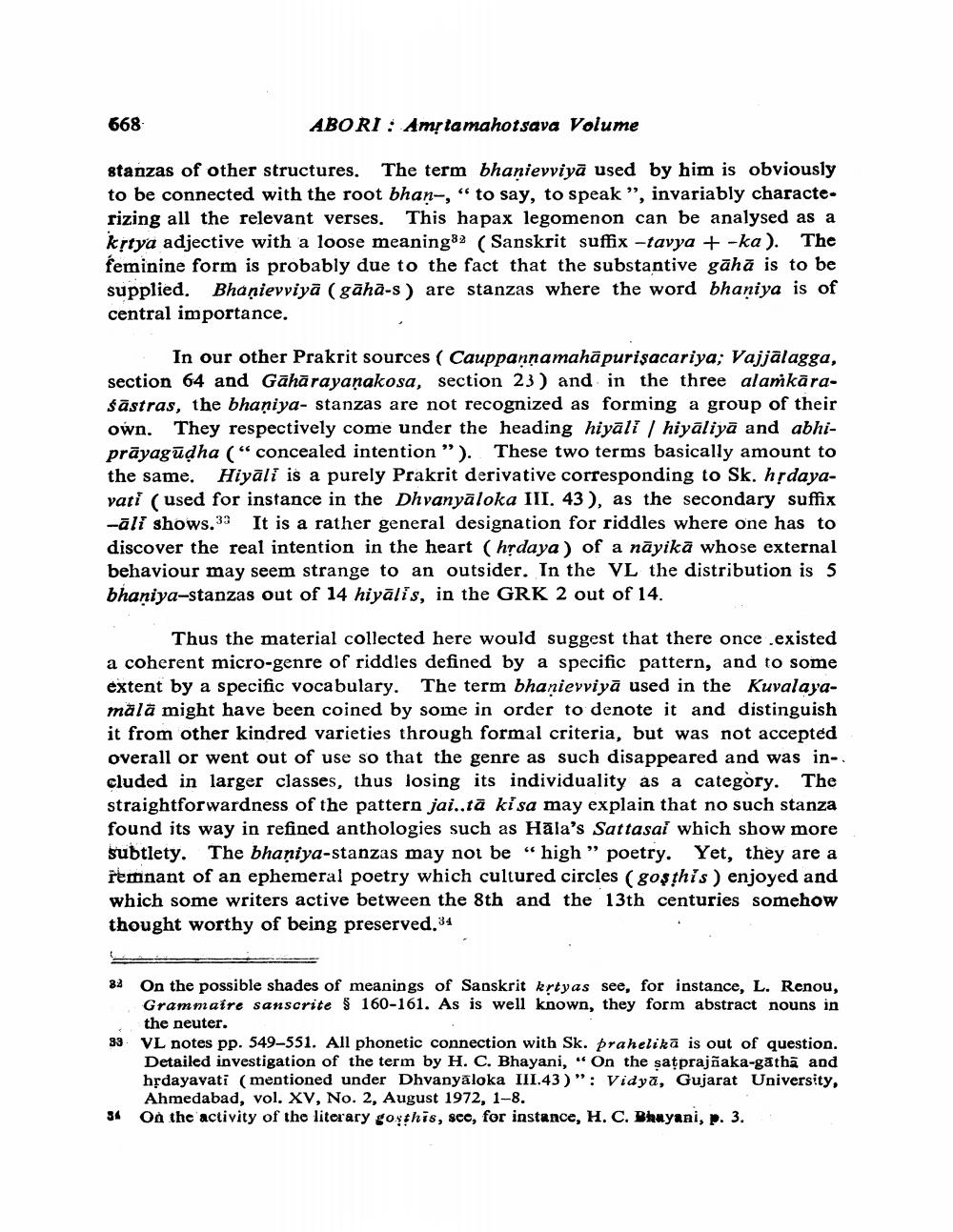Book Title: Prakrit Riddle Poetry Author(s): Nalini Balbir Publisher: Nalini Balbir View full book textPage 8
________________ 668 ABORI : Amrtamahotsava Volume stanzas of other structures. The term bhanievviyā used by him is obviously to be connected with the root bhan-,“ to say, to speak”, invariably characte. rizing all the relevant verses. This hapax legomenon can be analysed as a krtya adjective with a loose meaning82 (Sanskrit suffix -tavya + -ka). The feminine form is probably due to the fact that the substantive gāhā is to be supplied. Bhaņievviyā (gāha-s) are stanzas where the word bhaniya is of central importance. In our other Prakrit sources ( Cauppannamahāpurisacariya; Vajjālagga, section 64 and Gahārayaņakosa, section 23) and in the three alamkāraŠāstras, the bhaniya- stanzas are not recognized as forming a group of their own. They respectively come under the heading hiyāli hiyāliyā and abhiprāyagūdha (“concealed intention”). These two terms basically amount to the same. Hiyāli is a purely Prakrit derivative corresponding to Sk, hşdayavati (used for instance in the Dhvanyāloka III. 43), as the secondary suffix -āli shows.39 It is a rather general designation for riddles where one has to discover the real intention in the heart (hşdaya) of a nāyikā whose external behaviour may seem strange to an outsider. In the VL the distribution is 5 bhaniya-stanzas out of 14 hiyālis, in the GRK 2 out of 14. Thus the material collected here would suggest that there once .existed a coherent micro-genre of riddles defined by a specific pattern, and to some extent by a specific vocabulary. The term bhanievviyā used in the Kuvalayamālā might have been coined by some in order to denote it and distinguish it from other kindred varieties through formal criteria, but was not accepted overall or went out of use so that the genre as such disappeared and was included in larger classes, thus losing its individuality as a category. The straightforwardness of the pattern jai..tā ki sa may explain that no such stanza found its way in refined anthologies such as Hāla's Sattasai which show more subtlety. The bhaniya-stanzas may not be “high" poetry. Yet, they are a remnant of an ephemeral poetry which cultured circles (goşthis ) enjoyed and which some writers active between the 8th and the 13th centuries somehow thought worthy of being preserved.34 84 On the possible shades of meanings of Sanskrit krtyas see, for instance, L. Renou, Grammaire sanscrite $ 160-161. As is well known, they form abstract nouns in the neuter. 33 VL notes pp. 549-551. All phonetic connection with Sk. prahelikā is out of question. Detailed investigation of the term by H. C. Bhayani, “On the satprajñaka-gatha and hỉdayavati (mentioned under Dhvanyaloka III.43)" : Vidya, Gujarat University, Ahmedabad, vol. XV, No. 2, August 1972, 1-8. 34 On the activity of the literary goşthis, sce, for instance, H. C. Bluyani, p. 3. DPage Navigation
1 ... 6 7 8 9 10 11 12 13
